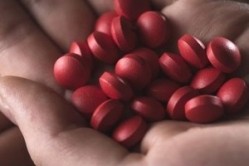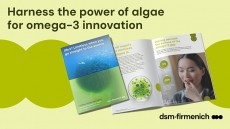Special edition: Innovations in minerals
Ironing out the issues: Can new research solutions help beat global iron deficiency?

Low iron status is a long established international health issue. From Paris to Peru, and all in between, health risks of malnutrition and anaemia associated with low levels of iron can transcend many of society’s boundaries.
The United Nations Food and Agriculture Organisation (FAO) has recently reported that more than a third of the global population suffer from health problems – such as anaemia – and malnutrition due to a severe deficiency in vital nutrients including vitamin A, iodine, and iron.
“While over 900 million people in the world suffer from hunger, even more – about 1.5 billion – are overweight or obese, and an estimated two billion suffer from micronutrient malnutrition,” say the FAO
Iron for health
Whilst severe malnutrition and anaemia are evident consequences of deficiencies in iron, there are several other health implications that are perhaps less obvious. Indeed, after many years of ‘established knowledge’ to suggest that pregnant women should take daily iron supplements during pregnancy in order to reduce the risk of anaemia, however a Cochrane review has now suggested that is this is in-fact not beneficial – revealing that taking 3 supplements per week is equally effective.
The review – led by researchers from the World Health Organisation (WHO) – investigated the benefits and harms of intermittent and daily supplementation with iron supplements in pregnant women, finding that overall taking fewer iron supplements during pregnancy works just as well for preventing anaemia as taking one per day.
From ‘unexplained fatigue’ to the risk of ADHD, and the healthy wiring of the brain, intake of sufficient iron – especially during development – is key to healthy functioning.
Is ferritin the answer?
Last year a 'groundbreaking' study uncovered the existence of at least two independent mechanisms for iron absorption from non-meat sources – so offering a potential new way to battle for iron deficiency using legume based ferritin.
The discovery of the alternative absorption mechanism using ferritin could provide the key to helping solve iron deficiency by providing an alternative, affordable, and readily available source of iron, said the US-based researchers.
“Our study shows that this different mechanism of iron absorption from plant ferritin is more efficient and gives the intestinal cells more control. It can be a new way to help solve global iron deficiency.”
“What these studies show together is that during digestion, ferritin is not converted from its large, mineral complex, which contains a thousand iron atoms, to individual iron atoms like those found in many iron supplements,” explained research leader Dr Elizabeth Theil from the Children’s Hospital Oakland Research Institute (CHORI). “Instead, ferritin iron is absorbed in its protein-coated, iron mineral form by a different, independent mechanism; iron absorbed as ferritin, leaves the intestine more slowly, but may, provide greater safety to the intestines than iron supplements,”
Fortification and supplementation
A recent Cochrane review comparing trials of iron supplementation suggested that use of micronutrient powders – containing vitamins and minerals such as iron, zinc and vitamin A – added to semi-solid foods of infants and children between six months and two years of age can effectively reduce their risk of anaemia and iron deficiency.
The review compared eight trials, which together involved 3748 children living in Asia, Africa and the Caribbean – finding that point of use (or home use) fortification with micronutrient powders “is an effective intervention to reduce anaemia and iron deficiency in infants and young children.”
However, supplements and home fortification is not the only solution.
Nestlé are known to use nutrient-boosted grains grown in Nigeria and Ghana as part of the ingredient mix for its ready-to-eat cereal, Golden Morn – which is fortified with vitamin A and iron.
Other suggested solutions include recent research from Spain, which concludes that fortified fruit juices could be the answer. The study suggests utilisation of microencapsulation technologies to fortify fruit juices with iron salt is an easy and cost-effective way of boosting iron levels in at-risk people.
















